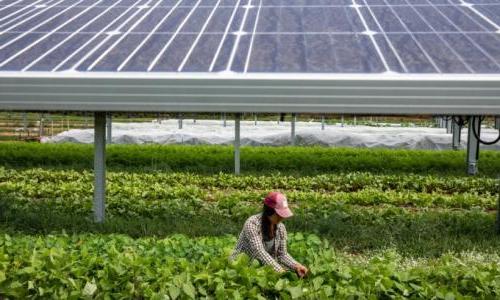Local and regional food systems are experiencing rapid growth in the U.S. 在前瞻性的公共政策的帮助下, 它们将继续增长, 让客户受益, 他们的地方经济, 以及国家的公共健康和环境目标.
但它们到底是什么呢? 定义“本地”是一个挑战, so here we focus on markets in which farmers sell food directly to a consumer or institution. We've put together a quick primer on some of the most common ways in which farmers sell their food directly to customers, 绕过主流, 统一的分销和零售系统.
农贸市场 allow individual farmers and other vendors to market their products directly to consumers in a single location, 让顾客从各种新鲜食品中选择, 当地的食物. Frequently they occur in an outdoor public venue at specified times during the growing season. 农贸市场曾经在美国很常见.S., but the rise of supermarkets and improvements in highway transportation led to their decline, and by 1970 there were just 340 farmers markets left in the country. 近几十年来, 农贸市场已经戏剧性地卷土重来, 到2011年,它们的数量已经增长到7个以上,000.
社区支持农业(CSA) is a system in which consumers buy a share of a farm's output at the beginning of the year and receive weekly installments of food throughout the growing season. This arrangement helps farmers by providing an infusion of cash early in the year and by allowing them to spend less time on marketing once the growing season begins. Benefits to consumers include the opportunity to support and interact with a local farmer and to receive fresh produce. According to one recent estimate, there are currently over 4,000 CSAs operating in the U.S.
Farm-to-School programs aim to improve the nutrition of school children by adding fresh, 从当地食物到自助餐厅的菜单, to enrich their education through curriculum development and experiential learning opportunities, and to foster connections between local farms and communities. Similar models in other institutional markets—such as hospitals, 监狱, and military installations—are also attracting growing interest.
食品中心 are distribution centers that provide a logistical and marketing interface between farmers and regional buyers. 农民把他们的产品送到食品中心, 它提供存储, 处理, and packaging services and markets the food to wholesale buyers such as restaurants, 酒店, 和大学, 以及零售客户. These facilities make it easier for local and regional farmers to compete with the mainstream, 统一的粮食生产和分配系统.
路边摊 have long been a familiar fixture along secondary roads in rural areas. They provide farmers with the most convenient marketing channel imaginable (the food never has to leave the premises), while attracting customers with the promise of maximum freshness.
摘操作, like roadside stands, rely on bringing the customer to the farm. They differ in allowing the customer to go into the fields or orchards to harvest the food themselves. 对很多客户来说, there is a strong appeal in the idea of getting their food directly from the field it was grown in.



